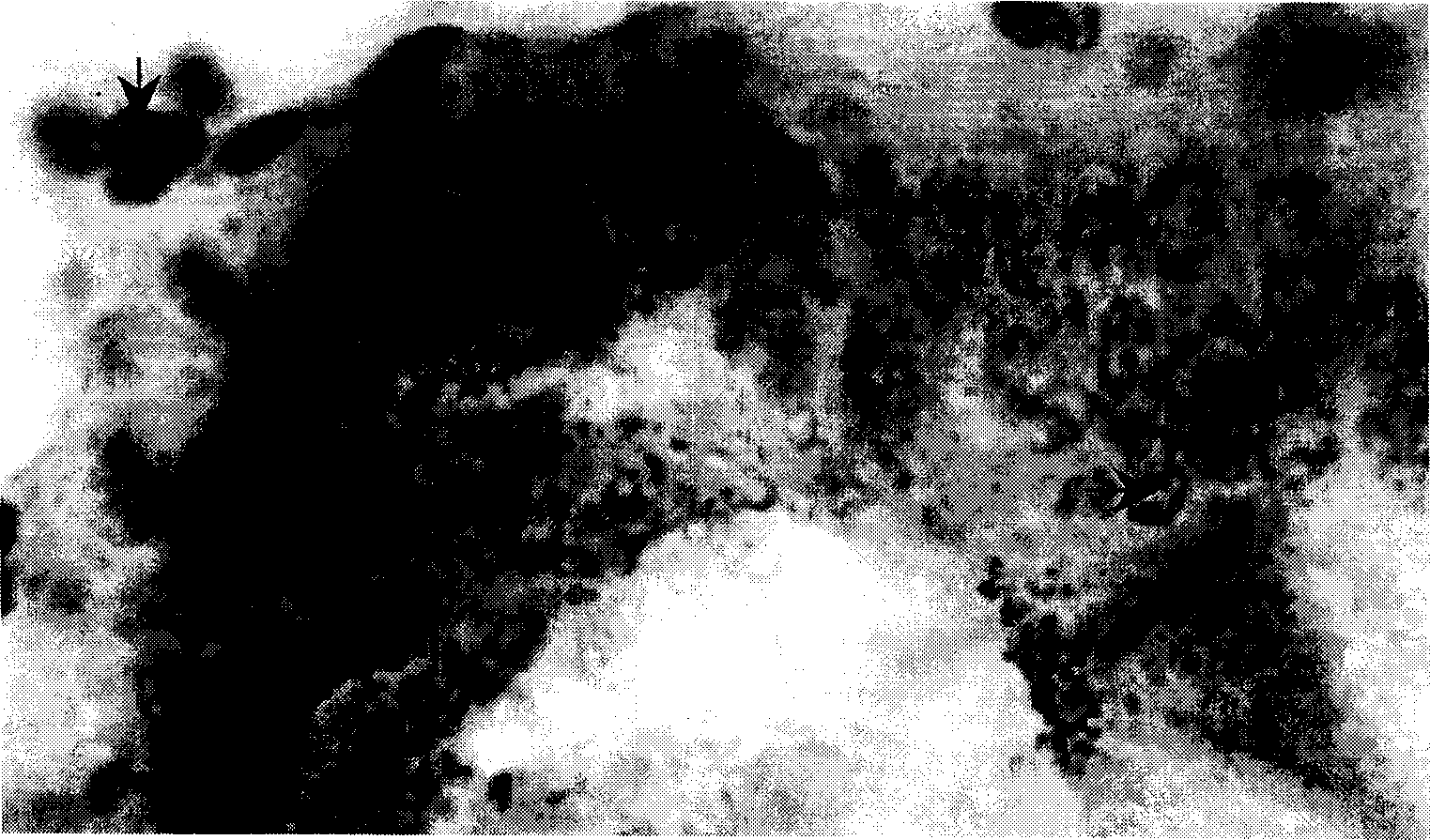Chlamys Farreri pathogeny rickettsia in situ hybridization detection method and its reagent kit
A technology of Rickettsia-like and Chlamystis scallops, applied in the field of in situ hybridization detection of the pathogenic Rickettsia-like scallops, can solve the problems of false positives, death, time-consuming, etc., and achieve sensitive detection results
- Summary
- Abstract
- Description
- Claims
- Application Information
AI Technical Summary
Problems solved by technology
Method used
Image
Examples
Embodiment 1
[0027] Scallop sample:
[0028] The infected Chlamys farreri juveniles were collected from farms with serious mortality in Shandong Qingdao and Changdao from June to August 2002, with an average size of 3.2cm×2.8cm×0.7cm (sample size n=26). Healthy Chlamys farreri juveniles were taken from Dalian Scallop Farm in August 2002, with an average size of 3.6cm×3.1cm×0.9cm (sample size n=16).
[0029] Healthy scallops were confirmed by light microscope observation, electron microscope observation and PCR detection of routine slices. Scallops from non-epidemic areas without Rickettsia-like infection were used as negative controls. Scallops in epidemic areas were confirmed by routine slice light microscope observation, electron microscope observation and PCR detection. Scallops infected with Rickettsia-like organisms were used as positive controls.
[0030] Main reagents and materials used for in situ hybridization:
[0031] (1) Sensitivity-enhanced in situ hybridization detection ki...
PUM
 Login to View More
Login to View More Abstract
Description
Claims
Application Information
 Login to View More
Login to View More - R&D
- Intellectual Property
- Life Sciences
- Materials
- Tech Scout
- Unparalleled Data Quality
- Higher Quality Content
- 60% Fewer Hallucinations
Browse by: Latest US Patents, China's latest patents, Technical Efficacy Thesaurus, Application Domain, Technology Topic, Popular Technical Reports.
© 2025 PatSnap. All rights reserved.Legal|Privacy policy|Modern Slavery Act Transparency Statement|Sitemap|About US| Contact US: help@patsnap.com


